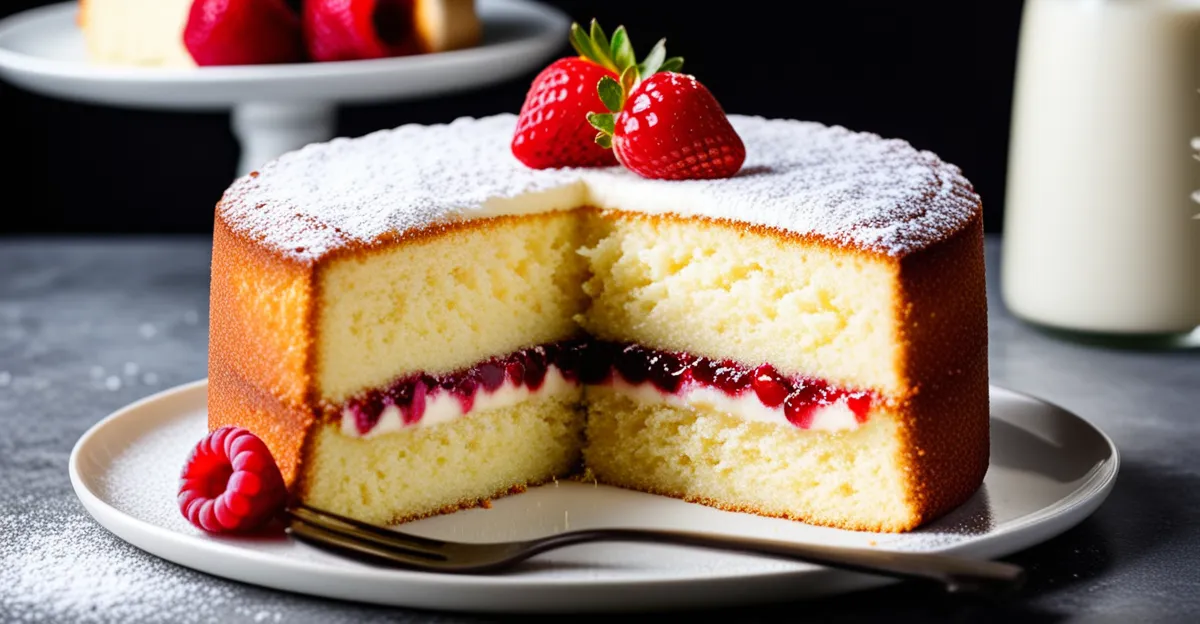Step-by-step guide for a rich and moist Victoria sponge cake
Achieving a moist cake with a rich texture starts long before the mixing bowl comes out. Begin by gathering all ingredients and ensuring they are at room temperature; this promotes even mixing and helps create a tender crumb. Accurate measuring is essential—using a kitchen scale reduces errors compared to relying on volume alone.
The initial step in the step-by-step instructions involves the classic creaming method. Beat high-quality softened butter with sugar until the mixture is pale and fluffy. This aeration is crucial as it traps tiny air pockets that expand during baking, contributing to the Victoria sponge cake’s lightness.
Also read : What are the techniques for achieving a crispy fish and chips?
Next, add eggs one at a time, beating well after each addition to prevent curdling. Sift the flour before gently folding it in to maintain the airiness from earlier steps. Overmixing here can lead to a dense sponge, so baking tips emphasize gentle, patient folding.
This methodical progression, focusing on ingredient quality and careful mixing, ensures your Victoria sponge cake emerges with the ideal moist and rich character every time.
Topic to read : What are the best tips for creating a perfect Yorkshire pudding?
Key ingredients and how they impact cake quality
Selecting the right Victoria sponge cake ingredients is fundamental to achieving a moist cake with a rich texture. High-fat butter plays a crucial role here; its fat content enriches the cake, contributing moisture and tenderness. Using butter with at least 80% fat ensures the crumb stays soft and flavorful throughout baking.
Fresh eggs also significantly impact cake rise and texture. They provide structure through proteins that coagulate during baking, helping the sponge hold its air pockets. Old or stale eggs may compromise lift, leading to a dense or flat sponge, which diminishes the desired airy richness.
Flour choice is equally important—opting for a soft wheat flour with moderate protein content yields a tender crumb. Too high protein flour, like bread flour, can make the sponge tough, while cake flour helps maintain lightness without sacrificing structure. Combining the right flour with quality butter and fresh eggs, as highlighted in baking tips, ensures your Victoria sponge cake achieves that hallmark moist and rich character.
Temperature control for perfect baking results
Achieving a moist cake with a rich texture starts with proper temperature control. First, always bring your Victoria sponge cake ingredients to room temperature before mixing. Cold butter or eggs can cause the batter to curdle, leading to uneven texture and poor rise. Room temperature ingredients mix more uniformly, creating a smoother batter that traps air effectively.
Preheating the oven is another critical step. Setting the correct oven temperature ensures even baking and avoids over- or under-cooking. Most Victoria sponge recipes recommend baking at around 180°C (350°F). Using an oven thermometer helps monitor accuracy since many ovens fluctuate, which can impact sponge moisture and crumb quality.
Baking time varies based on oven performance and cake tin size but typically ranges from 20 to 25 minutes. Testing for doneness with a skewer—if it comes out clean, the cake is ready—is a reliable technique. Avoid opening the oven door frequently; this can cause temperature drops affecting rise and texture.
Consistent temperature control throughout mixing and baking stages is essential to produce a perfectly risen, moist, and tender Victoria sponge cake every time.
Mixing techniques to ensure a light and even sponge
Mastering the cake mixing methods is vital to achieve a moist cake with a rich texture. Start with the essential creaming butter and sugar step. This aerates the batter by trapping tiny air bubbles, which expand during baking to yield a light, tender sponge. Use softened, high-fat butter and beat until the mixture is pale and fluffy—this ensures maximum aeration.
When incorporating eggs, add them one at a time to prevent curdling. Beat well after each addition to maintain a smooth, emulsified batter. This careful integration also helps retain the aeration created earlier.
Finally, gently fold in the sifted flour using a spatula or spoon. Folding avoids overmixing, which can develop gluten and lead to a dense texture. Use slow, deliberate motions to combine without deflating the batter. Following these step-by-step instructions in your mixing phase is one of the most effective baking tips to ensure even rise and a perfectly moist and rich Victoria sponge cake every time.











